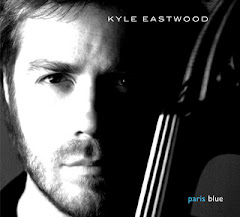The first time I heard pieces of this jazz suite was at a
live performance where the Jazz At Lincoln Center Orchestra traveled to a venue
near my home. They devoted the whole last half of the show to playing four
pieces from this work, including the rousing “Pollock” and the inimitable
“Dali”. Mr. Nash announced each piece beforehand, and in one of the more
memorable moments, explained that to evoke the esoteric characteristics of Dali
and his fantastical paintings, he wrote the piece in 13/8 time. This elicited
an awed reaction from the musically aware crowd. Mr. Nash took the reaction
with aplomb, drily noting, “Oh, yeah. As if you know what that is.” But we did,
and the crowd loved it.
I relate this story only to give context to my
comments, namely that, this recording is so well written and so well played, it
flows naturally from one song to the next, with each one still bringing some
new fold to the fabric of the overall piece. The dimension that the orchestra
adds is exceptional, from the lucid singing of trombonist Vincent Gardner , to
the spirited Spanish trumpet stylings of the ubiquitous Wynton Marsalis, to the
steady swing of the steely rhythm section of Dan Nimmer, Ali Jackson, and Carlos
Henriquez, there’s just so much to hear and enjoy on this jam-packed CD. As a
hard core collector of jazz recordings (I own the entire Penguin Jazz
Recordings core collection, plus a lot more), I can always find something to
meet a specific mood or occasion, but if I ever have a doubt, I can put on
“Portraits”, and it never fails to provide a lift and impress listeners, both
among those acquainted with the work and not. This is just a great jazz CD and
one of the most artistic (sorry) jazz works of the past decade. Fans of Wynton
Marsalis and JALCO will certainly be delighted with this work, but no true jazz
fan who bought this could possibly be disappointed. It’s wonderful.


















